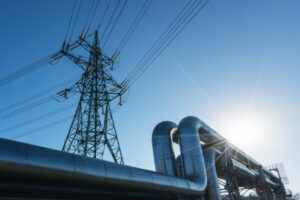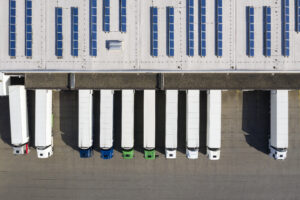
E-commerce deliveries: What are the consumer’s expectations?

Paris, January 12, 2022 – As the festive season approached, DCbrain, the specialist in AI applied to the supply chain, wanted to learn more about the product delivery preferences and expectations of consumers in Germany, France and the United Kingdom.
At a time of keen environmental awareness, which delivery mode do they favor? How do they make their choices? What information do they need?
Here are the many takeaways from the DCbrain survey conducted with a Toluna panel of 1500 consumers, in November 2022.
In 2020 and 2021, the pandemic and successive lockdowns considerably boosted direct deliveries to consumers, so much so that it became a habit. One out of two Europeans has had products delivered within the past month, and more than 8 out of 10 consumers have had products delivered over the past three months. This proportion is as high as 9 out of 10 for consumers in the United Kingdom.
Consumers who prefer to avoid journeys
Focus on the delivery mode: in top place, consumers choose delivery in person at a specified time; in second place, they choose delivery in person with no specified time; and, lastly, delivery in the mailbox or to the building janitor. Note that other delivery modes involving a journey appear less popular, such as delivery to a pick-up point, delivery in lockers and click & collect in stores.
Price remains a major factor when it comes to delivery
Nearly 9 consumers out of 10 accept paying delivery charges for a standard delivery. Of the three countries, France had the highest proportion (16%) of consumers who stated that they paid no delivery charge (as standard). This raises a question: do more French consumers sign up to loyalty schemes that offer free delivery throughout the year, or do they generally avoid delivery charges because of the amount of their average basket? In any case, at European level, it is first and foremost delivery price that influences the choice of delivery mode, more than the delivery time, which ranks second.
Environmentally-aware consumers
Increasingly aware of the environmental impact of transportation, particularly by road and air, consumers today know that their choice of delivery mode matters for the environment. Nearly 80% are convinced of this, 32% of which with certainty. Some education is still required however among the 14% of consumers who are not aware and the 7% who say that they do not know. Elsewhere, for 45% of European consumers, in-store deliveries (within a radius of less than 5 km) are perceived as being less polluting than home deliveries. This is particularly the case in France, where 51% take this view. It seems that the pooling of deliveries is seen as more environmentally friendly.
Consumers seeking greater transparency
How about brands and retailers? Do they provide enough information about their products’ transportation modes and routes? It would appear that they do not. 62% of consumers would like to know the distance travelled by ordered products, 68% the transportation means used, and 64% the overall environmental impact of the delivery. Where such information is available, it is generally not shared with consumers or visible at the time of ordering. If the main means of transportation used for the delivery was displayed, 33% of European consumers would be prepared to favor electric vehicles and 19% trains. The same is true for the last five kilometers of the delivery, where 40% would be prepared to favor electric transportation ahead of bicycles (18%).
Finally, to understand the environmental impact of delivery, 44% of consumers consider that a CO2 assessment provides the most relevant data, more than the number of kilometers travelled (23%) and the transportation means used (21%).
Consumers ready to wait longer for greener deliveries
European consumers’ environmental awareness has given rise to points of compromise in their behavior. 78% of consumers say they would be prepared to wait for a product to be delivered, from two to five days, if this reduces CO2 emissions. However, 22% prefer to pay more for a delivery in return for a guarantee that it reduces the carbon footprint. While European consumers favor a brand that promotes local production and, as a result, a short supply chain, they remain well disposed to brands that offer an environmentally-friendly delivery option, more than a brand that works to reduce its CO2 emissions. It is now up to brands and retailers to deploy smart solutions that optimize their transportation strategy and reduce their environmental impact. In the future, being able to highlight commitments made in the area of transportation decarbonization could become the distinguishing factor among consumers.
About
DCbrain is the specialist in AI applied to flow networks, designed for Supply Chain actors. DCbrain offers them a cutting-edge real-time planning and optimisation platform, using AI and hybrid AI algorithms that far surpass the capabilities of existing network planning tools available on the market, especially when faced with complex network configurations. Today, the company employs 45 people.
PRESS CONTACT
Laetitia Bocquet
Content Manager at DCbrain
laetitia.bocquet@dcbrain.com

